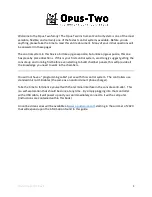
Calculations
Explanation of Pressure Calculation Worksheet
A
A-5
N.
Column 10 is a listing of the different masses to be loaded on the piston pressure
gauge to create the pressure listed in Column 5. The masses which will be listed here
are in addition to the
tare
components (piston, surface tension effects, bell jar
reference pressure, etc.). The mass of the tare components must be subtracted from
the mass shown in Column 9 before selection of the miscellaneous masses is started.
After subtracting the TARE mass from the Total Mass shown in Column 9, we must
now subdivide/distribute the remaining required mass value among the available
masses that will be loaded onto the Piston Table Assembly. It is most likely that there
may be many combinations of available masses that could be used to yield the
required Total Mass. However, it is strongly recommended that an orderly and
sequential method by used. From the Mass Set Table (calibration report) first
determine if the Sleeve Mass is required (which would be the case if the realization
of the Total Mass value would require the use of the larger platter masses). If yes,
then subtract its mass value from the Total Mass value which results in a new
"remainder". From this "remainder" mass value, choose the next largest available
mass value that may be subtracted. If the choice is from one of several "nominal"
mass platters then choose the first one in the available sequence. Subtract this value
from the "remainder", which now results in another new "remainder" mass value.
Continue this process until the "remainder", which now results in another new
"remainder" mass value. Continue this process until the "remainder" is smaller than
the smallest available mass from the mass set. At every step record the selected mass
(its mass ID number) into Column 10.
O.
Column 11, the remainder from Column 10, is the mass that must be placed on the
piston pressure gauge to complete the mass needed to set the desired pressure. This
"remainder", recorded in Column 11, is realized with the Trim Mass set provided
with all RUSKA Mass Sets. The Fluke supplied Trim Mass Sets are defined as Class
3, Type 1 (per ASTM E617, formerly Class S1 per NBS Cir. 547).
These fractional masses should also be used to adjust the mass load for piston
pressure gauge operating temperatures that differ from the expected temperature (t).
These fractional masses could also be used to adjust the mass load for the piston
pressure gauge if the reference plane of the device being calibrated is at a different
elevation than planned in the original head correction.
P.
In the English system, the remainder can be recorded in pounds in Column 11, and in
grams in Column 12. The conversion factor to convert pound mass to grams is
453.59237 g/lbm.
Q.
Column 13 is used to calculate a temperature coefficient. This temperature
coefficient is used to correct for any piston temperature variation from the expected
temperature value that was used to calculate the mass loads for the various pressure
points in the worksheet. See item B above.
Summary of Contents for RUSKA 2465A-754
Page 5: ...iii List of Tables Table Title Page 2 1 Symbols 2 2 ...
Page 6: ...RUSKA 2465A 754 Users Manual iv ...
Page 8: ...RUSKA 2465A 754 Users Manual vi ...
Page 12: ...RUSKA 2465A 754 Users Manual 1 4 ...
Page 26: ...RUSKA 2456A 754 Users Manual 3 4 ...
Page 54: ...RUSKA 2465A 754 Users Manual 6 14 ...
Page 64: ...RUSKA 2465A 754 Users Manual A 10 ...
Page 66: ...RUSKA 2465A 754 Users Manual A 12 ...
Page 68: ...RUSKA 2465A 754 Users Manual B 2 glg32 bmp Figure B 1 P C ASSY LR CAL D ...
Page 70: ...RUSKA 2465A 754 Users Manual B 4 glg34 bmp Figure B 3 P C ASSY W O CLEANING KIT ...
Page 72: ...RUSKA 2465A 754 Users Manual B 6 glg36 bmp Figure B 5 PC ASSY MHR W O CLEANING KIT ...
Page 74: ...RUSKA 2465A 754 Users Manual B 8 glg38 bmp Figure B 7 P C ASSY HR CAL D W O CLEANING KIT ...
Page 80: ...RUSKA 2465A 754 Users Manual B 14 glg43 bmp Figure B 12 2465A 23 ...
















































